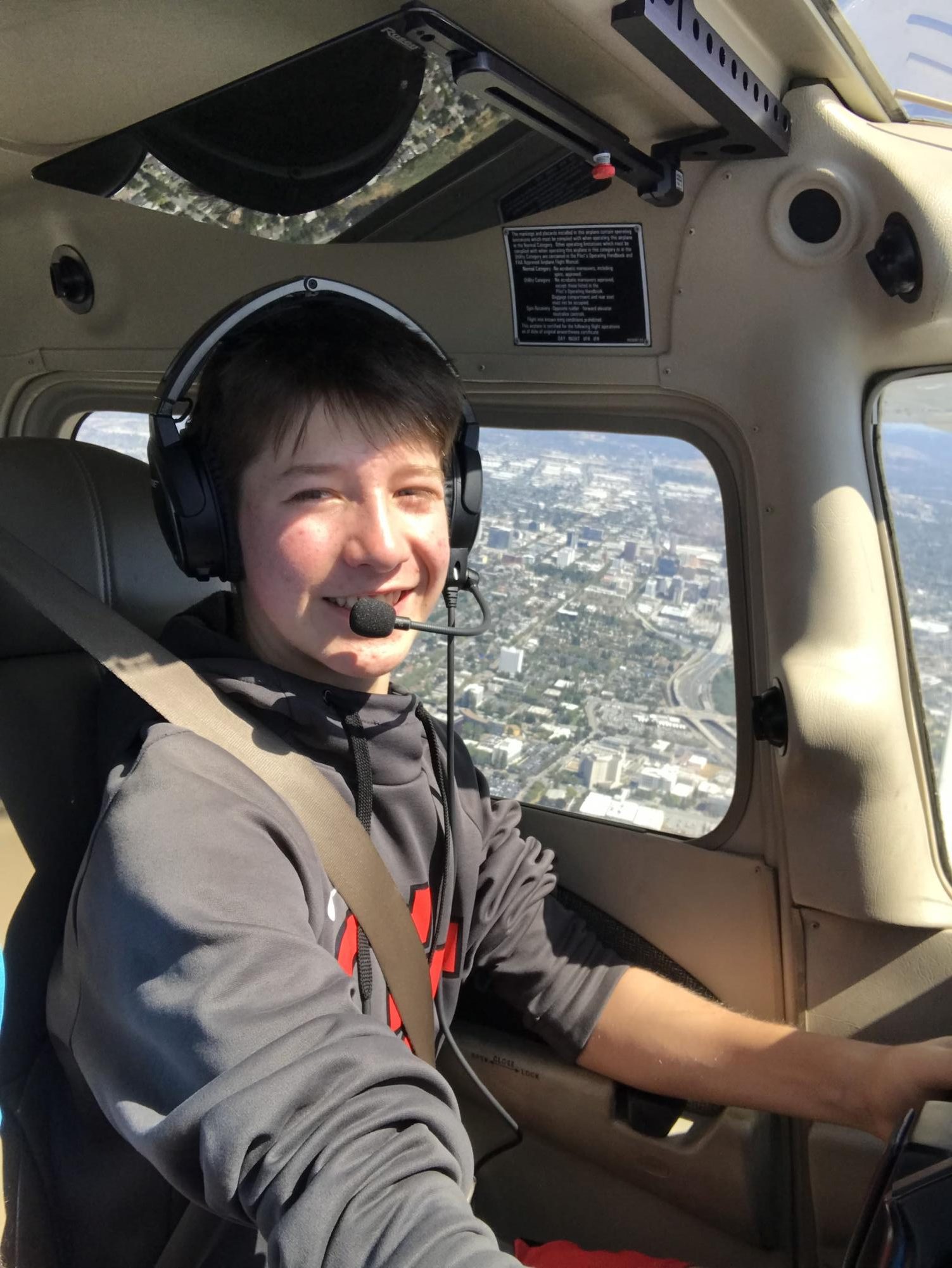
The word “pilot” typically conjures images of a male figure. According to the Centre for Aviation, women constitute only about 5% of the total pilot population worldwide. However, the gender imbalance in the industry has not deterred senior Emma Kochenderfer from pursuing her childhood dream of becoming a pilot. Kochenderfer’s passion for aviation reflectsher role in a growing effort to increase female representation in the field.
As a fourth-generation pilot, Kochenderfer grew up hearing stories of her grandpa’s flight school and her father’s training. Beginning ground school the summer before her sophomore year, she devoted hours to studying traffic patterns and aircraft systems in preparation for the Federal Aviation Administration written exam. That summer, Kochenderfer also flew a plane for the first time. “I remember going onto the runway and pushing in the throttle all the way for the first time, realizing that I was fully in control,” she said. “I don’t have words to describe that — it was incredible.”
Since then, Kochenderfer has continued to train at the Palo Alto Airport one to three times a week. She is currently working on flying at night, which requires a greater dependence on instruments inside the cockpit because of the darkness outside.
While she is qualified for the next step in the process, the in-flight and oral exam, aviation policies regarding mental health have made it difficult for Kochenderfer to receive the required medical certificate. She hopes to initiate conversations about mental health between pilots and the FAA to make these standards more realistic and accessible.
Kochenderfer’s favorite part about aviation is seeing the world from a different perspective and the tight-knit community she has formed with other pilots. “Especially because it’s a very male dominated field, being able to find other women and other young women who want to do this is really special to me,” she said. “There are so many people within the industry that have worked hard to get there.”
Her aviation experience also helps her hone skills that she can apply to other aspects of her life. “It’s helped me understand things in my classes a lot better, like physics, environmental science and even math,” she said. “But I would say the most important skill I’ve learned is being able to admit what you don’t know. When you’re flying, you’re responsible for your life, the lives of the people that you’re flying and anything that happens. Communicating with air traffic control and being able to follow through with procedures is the most important thing, so being able to say ‘I don’t understand what I’m supposed to do here’ can save you and your passengers’ lives.”
Beyond high school, Kochenderfer hopes to major in aerospace engineering and continue flying. She also hopes to someday try aerobatics, in which planes perform acrobatic maneuvers such as intense spins, drops and formation flying.

For junior Jonah Weinstein, flying is a family affair. With his grandfather already a licensed pilot and his uncle on the way to becoming one, soaring in the air doesn’t sound too scary to him. Weinstein is currently preparing to take the free solo written exam, and if he passes, the solo flying exam next semester.
Influenced by his family, Weinstein showed an interest in airplanes from an early age, playing with Playmobil airplanes and dressing up as a pilot for Halloween — but only in the past year did he decide to take the step of making his childhood dream come true. Last year, while scrolling on YouTube, Weinstein came across a flying video that jumpstarted his determination to become an officially licensed pilot.
The feeling of freedom Weinstein gets from flying makes all the hard work needed to obtain a license worth it. “Looking out the window, the world looks so big,” he said. “And it’s kind of calming, just passing over everyone on the ground.” The machine itself is also an innovation Weinstein finds fascinating. “I’m in awe that we built a machine that can fly,” he said.
Admiring planes, however, is entirely different from flying them. As he works toward obtaining his pilot’s license, Weinstein has found that during flights, a fun plane ride can sometimes turn into a difficult maneuvering situation.
A few weeks ago, he encountered a 350-knot crosswind, which made it harder to land the plane. “I hadn’t had that much experience landing with a crosswind,” he said. “We started turning off the runway a bit and it was a narrow runway.” Thankfully, he was able to straighten the plane in time with the help of his coach. “That was a bit scary in the moment,” he said.
Mentorship has been key in Weinstein’s pursuits. As a student pilot, he is obligated to fly with a licensed pilot, which lowers his stress. “If I do anything wrong — which is bound to happen because everyone makes mistakes — he’s there to correct it,” he said.
Weinstein hopes to one day make use of his pilot license. “I don’t know if I want to be a commercial pilot yet, but that’s something that, (once I) have my license, it’ll be a much easier process,” he said.
He encourages others to pursue aviation if it’s something they’re interested in, even just as hobby. “It is something you should explore because it’s just such a rewarding experience, and I’ve had a lot of fun so far,” he said. “Not that many people have the license, so it makes it pretty special.”
Your donation will support the student journalists of Henry M. Gunn High School. Your contribution will allow us to purchase equipment and cover our annual website hosting costs.





